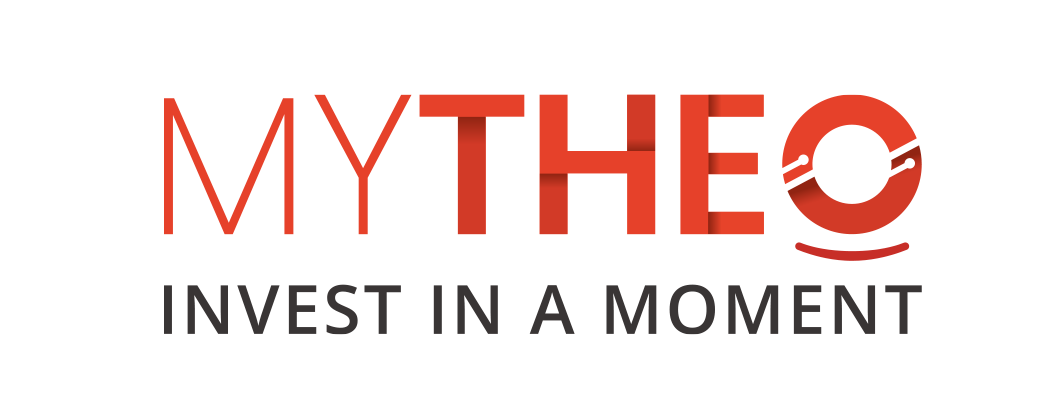Tuesday, 10 September 2019
Written by Malcolm Schreiber, CIO

MYTHEO (from GAX MD Malaysia) is a continuation of the legacy of Japan’s THEO, an online, automated investment service (a robo-advisor), which was developed by Money Design Japan. Money Design Japan is a partner and shareholder of GAX MD Malaysia. From its inception, the automated investment algorithm was developed and advised by a team of experienced professional portfolio investment managers and Professor Yasuyuki Kato of Kyoto University, a professor of finance who also sits on the board of Japan’s Government Pension Investment Fund, the largest pool of retirement savings in the world. They wanted to create a robo-advisor that would incorporate cutting-edge investment practices used by large pension funds and also academic theory on investments for individuals appropriate to their circumstances. Professor Kato is currently an advisor to MYTHEO’s Investment Policy Committee and the Head of the Money Design Research Institute.
The first core principle of the investment approach is the idea of functional portfolios, which are portfolios designed to achieve a specific purpose. For example, a portfolio may be constructed to generate income for someone who needs income (such as a retiree) or a portfolio may be constructed to protect against rising inflation, for someone with considerable wealth who is concerned that future inflation may erode the real value of their assets, or a portfolio may be designed to take more risk in order to achieve higher long-term growth of one’s assets. We use 3 such functional portfolios, an Income Portfolio, an Inflation Hedge Portfolio and a Growth Portfolio. Each functional portfolio is then optimized and managed by an algorithm customized to the specific purpose of the portfolio. The algorithms are able to use more kinds of data for better analysis and optimization than could a general algorithm that was used for all different types of assets.
In order to manage those functional portfolios, a few other core principles were established. One was the idea of passive investing: we only use ETFs (exchange-traded funds), which are low-cost, very liquid and easily traded index funds that can be used to invest in almost every kind of asset, in any country. Furthermore, all of our portfolios are managed by algorithms, with regular updates of the portfolios to reflect changing market conditions and regular rebalancing to the target allocations. Human judgement of our professional investment team, with decades of experience in investing a wide variety of strategies and assets, has been used to create the algorithms, but the asset allocation decision-making is implemented objectively and consistently by those algorithms without the biases, second-guessing and irrationality that plague investors.
The next 2 principles that underlie the management of our functional portfolios are those of risk-based investing and “smart beta”. All investing involves forecasts of future behavior of assets. In general, it is better to base investment decisions on things that one can reliably predict than on things that one cannot. Decades of academic research, as well as the actual experience of investors, have shown that measures of risk are much more stable and predictable than returns. Thus, our functional portfolio management algorithms are all primarily based on risk estimates rather than return estimates and these methods have been found time and time again to outperform other methods in simulations. Academic research has also shown that there are certain anomalies in markets so that assets with certain characteristics, such as stocks with smaller capitalizations or low price-to-book value ratios, also tend to outperform the general market – a Nobel Prize was even awarded for this discovery. This concept is called smart beta and our models incorporate it as well.
The final piece of our strategy was the methodology to determine an optimal allocation among functional portfolios for an individual customer. For this purpose, the analytic hierarchy process (AHP), a mathematical technique for complex decision-making is being used. From the answers to the customers’ profiling questions, our models estimate the relative importance to that customer of different aspects of the functional portfolios, and then from these priorities the AHP determines the best allocation for the customer among the 3 functional portfolios.
MYTHEO incorporates all the aforementioned principles and techniques but has been customized to Malaysia in a number of ways:
• The universe of investable ETFs is broader for Malaysian investors than for Japanese investors;
• Historical prices and other data, for use in optimizations, have been converted into RM rather than Japanese Yen, which has a significant impact as the currencies often move oppositely relative to the US dollar;
• Tax-rates, interest rates and inflation rates, which are different in Malaysia and Japan, are included in the algorithms for managing functional portfolios;
• The demographics of the 2 countries which are also distinct such as life expectancy, average retirement age, and average per-capita income, which help determine the recommended allocation among functional portfolios.
As MYTHEO is managed by algorithms, it is possible to simulate the past performance of such strategy, which we have done from 2007. It is not possible to go back earlier than that because many of the fixed income ETFs in our Income Portfolio were only launched in that year. However, that was still early enough to demonstrate the effects of the 2008 Lehman shock, the worst market crash since the Great Depression. While this is only a simulation, the model was developed in 2013 and portfolios have been managed in Japan according to this strategy since October 2014, tracking the simulation very closely because the trading is automated and ETFs are very liquid instruments. These simulations have been run for both THEO and MYTHEO and they demonstrate similar performance, as the assets invested in are largely the same US-listed ETFs, so any performance differences are mainly attributable to currency fluctuations, which tend to even out over time. Moreover, the methods used for THEO and MYTHEO are proven techniques (such as minimum volatility, value and momentum investing, yield maximization, duration control, value-at-risk minimization) that have been widely used in asset management for a long time, so there is no reason to think that they would work significantly better on average in Japan than in Malaysia.
These 5 years of actual, live experience with managing this strategy have validated our investment philosophy and approach, and have attracted more than 75,000 active users (with total assets under management of more than USD450 million) to our services in Japan and in Malaysia.



